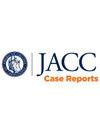Cardiac Mass, Bacteremia, and Embolic Stroke
Q4 Medicine
引用次数: 0
Abstract
Background
Cardiac masses may mimic tumors or vegetations. Differentiation is essential, particularly in the context of bacteremia and embolic complications.
Case Summary
A 75-year-old man presented with fatigue, myalgia, and new-onset atrial fibrillation. Transesophageal echocardiography revealed a mitral valve mass with features suggestive of fibroelastoma or myxoma. Blood cultures were positive for Streptococcus mitis. The patient subsequently developed an intracerebral hemorrhage requiring craniotomy. Serial imaging demonstrated resolution of the mitral valve mass, supporting a diagnosis of vegetation.
Discussion
Diagnosis of infective endocarditis requires integration of clinical context, microbiologic data, and serial imaging rather than reliance on echocardiographic appearance alone. Anticoagulation strategies must be individualized after hemorrhagic events.
Take-Home Messages
Cardiac masses in the setting of bacteremia require careful interpretation as lesions that appear benign may represent vegetations. Accurate diagnosis depends on integration of Duke criteria and serial transesophageal echocardiography evaluations, rather than reliance on a single echocardiogram.
心脏肿块,菌血症和栓塞性中风
背景:心脏肿块可能类似肿瘤或植物。鉴别是必要的,特别是在菌血症和栓塞并发症的情况下。病例总结:一名75岁男性,表现为疲劳、肌痛和新发心房颤动。经食管超声心动图显示二尖瓣肿块,表现为纤维弹性瘤或黏液瘤。血培养呈链球菌炎阳性。患者随后出现脑出血,需要开颅手术。连续成像显示二尖瓣肿块的分辨率,支持植被的诊断。感染性心内膜炎的诊断需要综合临床情况、微生物学数据和一系列影像学检查,而不是仅仅依靠超声心动图的表现。出血事件后抗凝策略必须个体化。在菌血症的背景下,心脏肿块需要仔细解释,因为看起来良性的病变可能代表植被。准确的诊断依赖于杜克标准和一系列经食管超声心动图评估的整合,而不是依赖于单一的超声心动图。
本文章由计算机程序翻译,如有差异,请以英文原文为准。
求助全文
约1分钟内获得全文
求助全文
来源期刊

JACC. Case reports
Medicine-Cardiology and Cardiovascular Medicine
CiteScore
1.30
自引率
0.00%
发文量
404
审稿时长
17 weeks
 求助内容:
求助内容: 应助结果提醒方式:
应助结果提醒方式:


